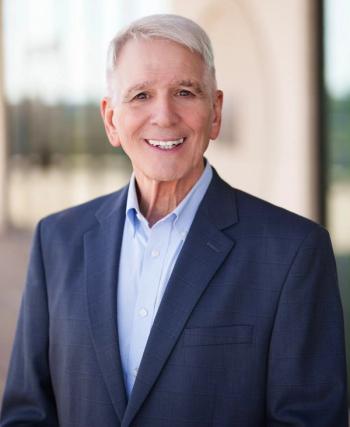
Experts Push for Long-Term Solutions of Rural Hospital Fund Amid Senate Approval
In a conversation with Managed Healthcare Executive, Michael Abrams, M.A., managing partner at Numerof & Associates, painted a picture of what’s at stake.
A Senate-passed bill that would establish a $50 billion rural hospital relief fund has sparked renewed hope for struggling rural hospitals—but concerns remain about how the money will be used, who will get it and whether it will drive lasting change.
The fund is part of a sweeping tax-and-spending package passed July 1 as part of the GOP’s “One Big Beautiful Bill” domestic policy initiative.
The legislation
It now heads to the House, where Republican leaders are scrambling to build enough support to meet their self-imposed July 4 deadline to send the bill to President Donald Trump’s desk.
Initially set at $25 billion, the rural fund was doubled to $50 billion in the final version of the bill.
The change came after significant concern that Medicaid spending cuts in the legislation would devastate rural healthcare providers.
Senate Republicans had briefly considered raising taxes on ultra-wealthy individuals to help pay for the expansion—but that amendment failed, even as 18 GOP senators broke party lines and voted in favor.
Michael Abrams, M.A., managing partner at Numerof & Associates, welcomed the funding but raised concerns about implementation.
“They need to be clear about who it’s for,” he said. “This started as a rural hospital relief fund, but now it’s expanded to include nursing homes and community health centers. That’s like putting a sugar bowl next to an anthill—you’re going to have everyone trying to qualify.”
The legislation has drawn fire from within the GOP as well.
Senators Susan Collins (Maine), Thom Tillis (North Carolina) and Rand Paul (Kentucky) voted against the bill.
Collins and Tillis cited concerns over the bill’s steep Medicaid cuts, which the Congressional Budget Office estimates will total more than $1 trillion over the next several years.
Those cuts have alarmed health insurers and providers.
“The Senate’s passage of this bill brings us one step closer to a devastating reality: nearly $1 trillion in cuts to Medicaid that would take health coverage and access to care away from millions of Americans,” the Modern Medicaid Alliance said in a statement.
Abrams also criticized the provider tax system, which some states rely on to draw down federal Medicaid dollars.
“It’s an institutionalized con game,” he said. “You take money from here, put it over there, and then get it back. It’s deplorable that it even exists.”
If Medicaid cuts go through, particularly in states that depend on provider taxes, Abrams said the result could be a double blow: fewer patients with coverage and more uncompensated care.
“The biggest threat to access is finding a provider who’ll take Medicaid,” he said. “If they improved reimbursement rates, that would go a long way.”
Still, he stressed that throwing money at the problem without a long-term plan would be a mistake.
“People need to understand what’s going on. And right now, it’s just not right,” Abrams said.
Additionally, he shared that he could only find this bailout fund “acceptable” if it were time-limited to three or four years and required the creation of a federal task force to develop a strategic plan for rural hospital capabilities.
This could include smart use of technology, "not trying to compete with big hospitals for complex surgeries,” he said.
Abrams noted the concerning shift from the fund’s original focus.
It was initially called a rural hospital fund, but he said it’s now expanded to include nursing homes and community health centers.
“If that really passes, we’ll see a rush by all kinds of organizations to get designated as eligible. It’s like putting a sugar bowl out near an ant hill,” he said.
Abrams also warned that unless the rural hospital fund is implemented carefully, it could cause inefficient care models to continue on and widen inequities.
He stressed the need for a clear definition of eligibility and stronger federal oversight.
“I’ve done a lot of work with 340B, and one of the biggest issues there is ambiguity over who’s eligible,” he said. “We don’t need to repeat that mistake.”
Beyond financial support, Abrams argued the focus should shift to how rural hospitals are structured and integrated into the broader care system.
“A lot of rural hospitals are doing surgeries or complex treatments just once in a while. That’s not safe for patients or fair to providers,” he said. “There’s data showing that low-volume procedures often lead to worse outcomes.”
Instead, he pushed for a regional approach that coordinates care between rural facilities and larger hospitals, leveraging technology for remote services when possible.
Newsletter
Get the latest industry news, event updates, and more from Managed healthcare Executive.






















































